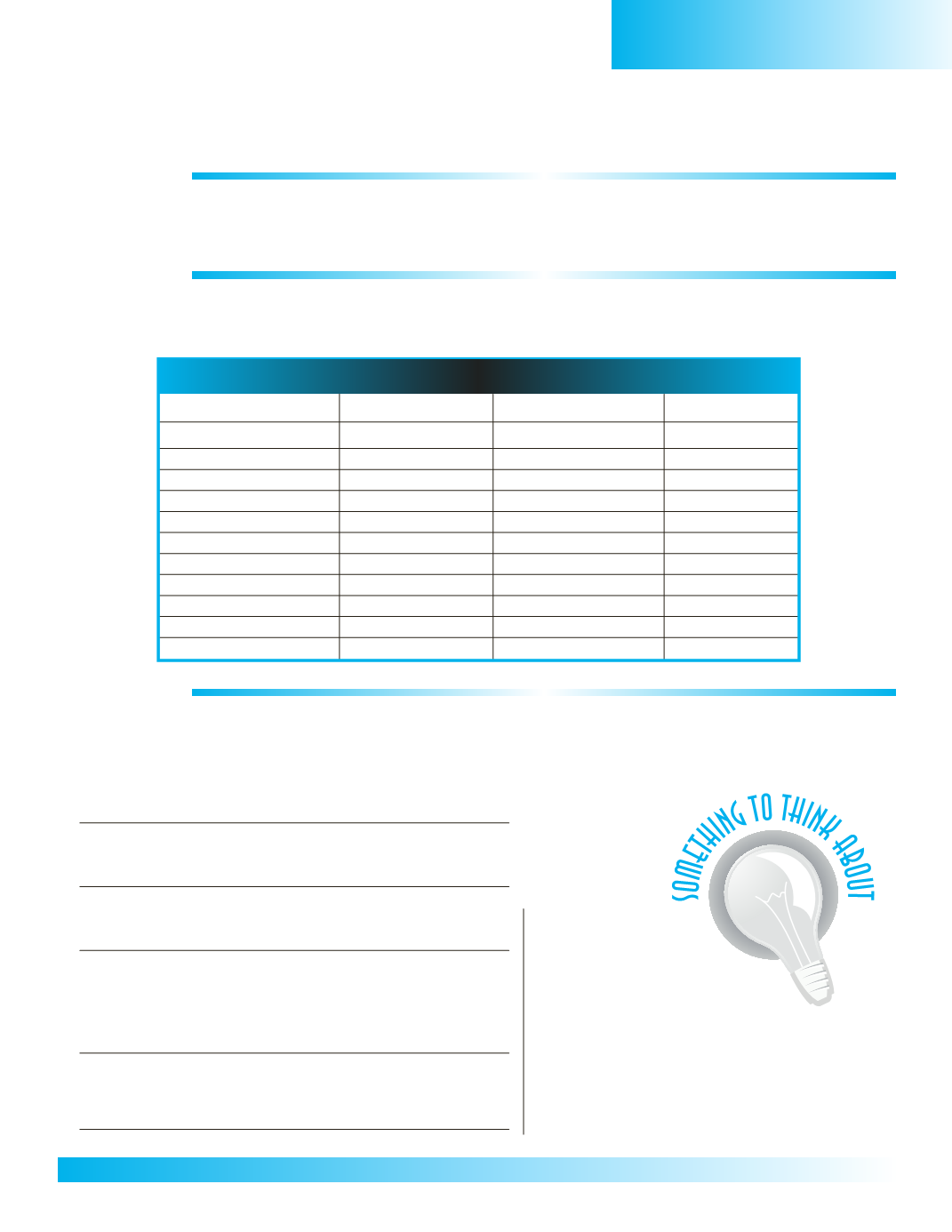
COPYRIGHT
37
PENNSVALLEY
Since 1815,
Switzerland has
stayed out of the
manywars that have
affected other European
nations. Its
neutrality
has allowed it
to become the headquarters for
international organizations such as
the UnitedNations, Red Cross, and
WorldHealthOrganization.
Cental Europe
Lesson 20: (Cont.)
Political Features of Central Europe
ACTIVITY 1:
On the activity map on the next page, label the countries of Central Europe that are numbered and
boldfaced
on thepreviouspage.Use thenumbers tohelpyou locateeachcountryon theactivitymap.
Use the political map of Europe in your classroom atlas as a reference.
ACTIVITY 2:
The countries of Central Europe are listed in the
InformationOrganizer
below. 1)Use the numbers to
helpyou locateand label eachcountryonyouractivitymaponpage38.2)Next, findeachcountry’scapital
city at its starred locationon themap. 3)Write the capital city’s namenext to its country in theorganizer.
InformationOrganizer for Central Europe
000
Country
Capital City
SquareMiles
Population
0
1. Belgium
12,672
10,258,800
0
2.Netherlands
13,097
15,981,500
0
3. Luxembourg
998
443,000
0
4.Germany
134,910
83,029,500
0
5. Switzerland
15,355
7,283,200
0
6. Austria
31,942
8,200,000
0
7. Liechtenstein
62
32,500
0
8. Poland
117,552
38,633,900
0
9.CzechRepublic
30,449
10,264,000
10. Slovakia
18,993
5,415,000
11.Hungary
35,652
10,106,000
ACTIVITY 3:
Refer to the InformationOrganizer to answer the following questions. Be sure to use the entire chart
to find the answers. Some answerswill require the use of your math skills.
1.What is themost populated country inCentral Europe?
2.What country has the lowest population?
3.Which country covers themost land area?
4.What country is themost densely populated?
(
Hint
: Population is the numerator and squaremiles
is the denominator.)
5.Calculate the total population of Central Europe
4.
to the nearest million people.


